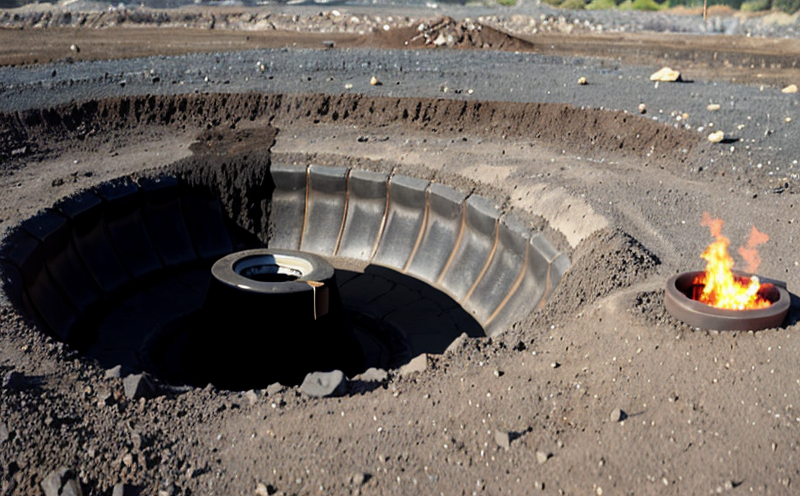ISO 562 Volatile Matter in Coal Testing
The ISO 562 standard is a crucial benchmark for assessing the volatile matter content of coal. This test evaluates the quantity of volatiles that can be driven off by heating the specimen to a specified temperature and duration under controlled conditions. Understanding the volatile matter content is essential as it influences the calorific value, combustion behavior, and overall quality of coal used in various industrial processes.
Coal's volatile matter contributes significantly to its energy output, making accurate determination vital for optimizing fuel efficiency and ensuring consistent performance across different applications. This test plays a pivotal role in quality control and compliance with industry standards, which is critical for both producers and consumers of coal.
The testing procedure outlined by ISO 562 involves heating the specimen to 900°C ± 10°C and holding it at this temperature for two hours. The weight change during this process indicates the volatile matter content. This method provides a precise measurement that can be used to assess the quality of coal, compare different samples, or evaluate the consistency of production processes.
For accurate testing, careful preparation is necessary. Samples must be ground to an appropriate particle size and dried to constant weight before being subjected to the test conditions. The precision and accuracy of these preliminary steps can influence the final results significantly. Therefore, adherence to strict protocols from sample collection to analysis is crucial.
Understanding the implications of volatile matter content extends beyond mere compliance; it also aids in optimizing fuel utilization. By knowing the exact amount of volatiles present, industries can tailor their processes to maximize energy efficiency and minimize waste. This knowledge is particularly valuable for power generation facilities, steel plants, and other large-scale industrial users who rely heavily on coal as a primary energy source.
The importance of this test cannot be overstated in ensuring the reliability and safety of coal utilization. Variations in volatile matter content can lead to inconsistencies in combustion behavior, affecting boiler performance or leading to incomplete combustion issues that could result in reduced efficiency or even safety hazards. Therefore, regular testing using standards like ISO 562 is essential for maintaining optimal operational conditions.
In conclusion, the ISO 562 test provides critical insights into coal quality by quantifying its volatile matter content. This information is indispensable for industries that depend on coal as a primary fuel source, enabling them to make informed decisions about process optimization and compliance with international standards.
Applied Standards
| Standard Number | Description |
|---|---|
| ISO 562:1987 | Determination of volatile matter in coal and other carbonaceous materials by heating under nitrogen atmosphere at a specified temperature. |
| ASTM D3172-14 | Standard Test Method for Volatile Matter of Organic Fossil Fuels Other Than Coal. |
| EN 12085:2006 | Determination of volatile matter in coal and other carbonaceous materials by heating under nitrogen atmosphere at a specified temperature. |
Industry Applications
The ISO 562 test is widely used across various sectors where coal and other fossil fuels play a significant role. Power generation companies rely on this method to ensure consistent fuel quality, which directly impacts the efficiency of their power plants. Steel manufacturers also benefit from accurate volatile matter content assessments as it helps in optimizing furnace operations and reducing waste.
Additionally, this test is crucial for compliance with international standards and regulations that govern the use of coal in various applications. By adhering to ISO 562, industries demonstrate their commitment to quality control and safety, which is essential for maintaining a positive reputation and meeting regulatory requirements.
The results from ISO 562 testing can be used to benchmark different suppliers or batches of coal, ensuring that the highest quality materials are consistently supplied. This not only enhances operational efficiency but also contributes to environmental sustainability by minimizing waste and emissions.
Moreover, in research and development (R&D) environments, this test provides valuable data for developing new processes or improving existing ones. By understanding the volatile matter content of coal samples, R&D teams can explore innovative ways to enhance fuel efficiency and reduce carbon footprints.
Quality and Reliability Assurance
The ISO 562 test is a cornerstone in ensuring the quality and reliability of coal used in various industrial applications. By adhering to this standard, industries can consistently achieve high-quality fuel that meets strict performance criteria.
The precision and accuracy of ISO 562 testing are paramount for maintaining reliable operations across different sectors. For instance, power plants depend on accurate volatile matter content data to optimize boiler efficiency and reduce operational costs. Similarly, steel manufacturers use this information to enhance furnace performance and ensure consistent product quality.
Compliance with ISO 562 also ensures that industries are meeting regulatory requirements set by international bodies. This not only enhances the reputation of the company but also fosters trust among stakeholders. By adhering to such standards, businesses can demonstrate their commitment to excellence and reliability in their operations.
The results from ISO 562 testing play a crucial role in quality control processes. They allow industries to identify any inconsistencies or variations in coal quality that could impact operational performance. Through regular testing, companies can proactively address issues before they affect production efficiency or safety.
In summary, the ISO 562 test is indispensable for ensuring the quality and reliability of coal used in various industrial applications. By adhering to this standard, industries can consistently achieve high-quality fuel that meets strict performance criteria, thereby enhancing operational efficiency and meeting regulatory requirements.





